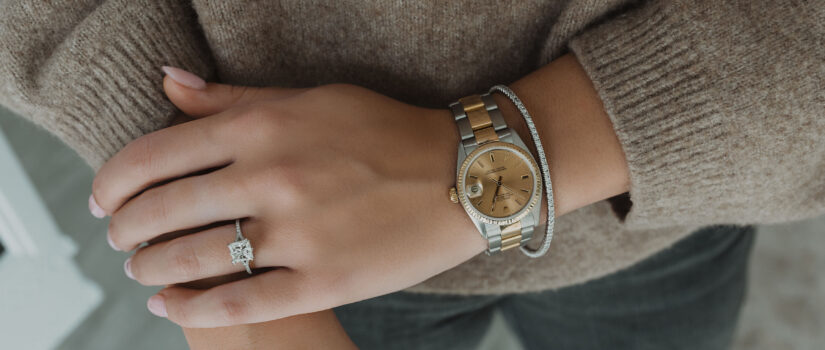
When it comes to diamonds, one question has increasingly dominated the conversation: “Are lab-created diamonds just as good as natural diamonds?” This question reflects a broader curiosity about diamonds #1 question and their place in the market. While some consumers remain loyal to traditionally mined stones, others are turning to lab-grown alternatives. In this article, we will explore why this question is the #1 inquiry in the diamond world and break down the various factors that influence the decision between lab-created and natural diamonds.
What Are Lab-Created Diamonds?
Lab-created diamonds, also known as lab-grown or synthetic diamonds, are diamonds that are grown in a laboratory under controlled conditions. These diamonds are chemically, physically, and optically identical to natural diamonds, which form deep within the Earth over millions of years. Instead of taking millions of years, lab-created diamonds are formed in a matter of weeks through advanced technological processes like High Pressure High Temperature (HPHT) or Chemical Vapor Deposition (CVD).
Why Do People Ask About Lab-Created Diamonds?
The surge of interest in lab-created diamonds is driven by several factors. First, there’s the price. Lab-grown diamonds are generally less expensive than mined diamonds, sometimes by as much as 30-40%. This affordability allows buyers to get larger stones or higher-quality cuts for their money. Another reason for the growing interest is sustainability. Mined diamonds have long been associated with environmental destruction and ethical concerns like child labor and conflict diamonds. Lab-grown diamonds offer an ethically sound and environmentally friendly alternative.
Are Lab-Created Diamonds Real Diamonds?
One of the most frequent follow-up questions is whether lab-created diamonds are “real” diamonds. The answer is a resounding yes. Lab-grown diamonds have the same atomic structure as natural diamonds, which means they have the same hardness, brilliance, and sparkle. Both types of diamonds are made from pure carbon arranged in a crystalline structure, which is why they’re both so incredibly durable and refract light so well.
The key difference between the two is their origin. Natural diamonds are formed under the Earth’s crust, while lab-grown diamonds are produced using man-made methods in controlled environments. Despite this difference in origin, once cut and polished, it’s nearly impossible to distinguish a lab-grown diamond from a natural one with the naked eye.
How Do Lab-Created Diamonds Impact the Environment?
Another major concern that drives the interest in lab-grown diamonds is their environmental impact. Mining for diamonds is an energy-intensive and destructive process. It often involves the removal of large sections of the Earth’s surface, displacing local ecosystems and causing long-term environmental damage. In contrast, lab-grown diamonds require significantly less energy and have a smaller carbon footprint.
It’s worth noting, however, that the energy demands for creating diamonds in a lab can still be high, depending on the production process. CVD diamonds, in particular, use considerable energy. But when compared to the large-scale environmental impact of diamond mining, lab-created diamonds offer a more sustainable option.
Are Lab-Created Diamonds Popular Among Millennials?
One of the main demographics driving the popularity of lab-created diamonds is millennials. This generation, known for its emphasis on sustainability and ethical consumption, has been a key factor in the rise of lab-grown diamonds. Millennials are more likely to question the ethics behind traditional industries and seek alternatives that align with their values. Lab-grown diamonds represent a solution that satisfies both their desire for luxury and their commitment to ethical sourcing.
Additionally, millennials are often more budget-conscious than previous generations. With the rising costs of living and the financial strain caused by student loans, a less expensive diamond that retains all the beauty of a natural diamond is an attractive option.
How Do Lab-Created Diamonds Compare in Value?
When discussing diamonds, it’s impossible to ignore the question of value. Historically, diamonds have been associated with high resale value and long-term investment. But how do lab-created diamonds stack up in this regard?
While lab-created diamonds are identical in many ways to natural diamonds, their resale value is often lower. This is primarily because lab-grown diamonds are not as scarce as natural diamonds. While the supply of mined diamonds is finite, lab-grown diamonds can be produced on demand. As a result, natural diamonds tend to hold their value better over time, though they can fluctuate based on market conditions.
Should You Choose Lab-Created or Natural Diamonds?
The decision between lab-created and natural diamonds ultimately comes down to personal preference. If you value tradition, scarcity, and long-term investment, a natural diamond might be the better choice. However, if you prioritize sustainability, ethics, and affordability, lab-created diamonds are an excellent alternative.
It’s also important to consider what you want in terms of size and quality. Because lab-grown diamonds are less expensive, you may be able to purchase a larger or higher-quality stone for the same price as a smaller, lower-quality natural diamond.
Conclusion
The rise of lab created diamonds has reshaped the diamond industry and led to a fundamental question that many consumers are now asking: Are lab-created diamonds just as good as natural diamonds? As we’ve seen, the answer is complex and depends on your priorities—whether they are ethics, environmental impact, price, or tradition.
